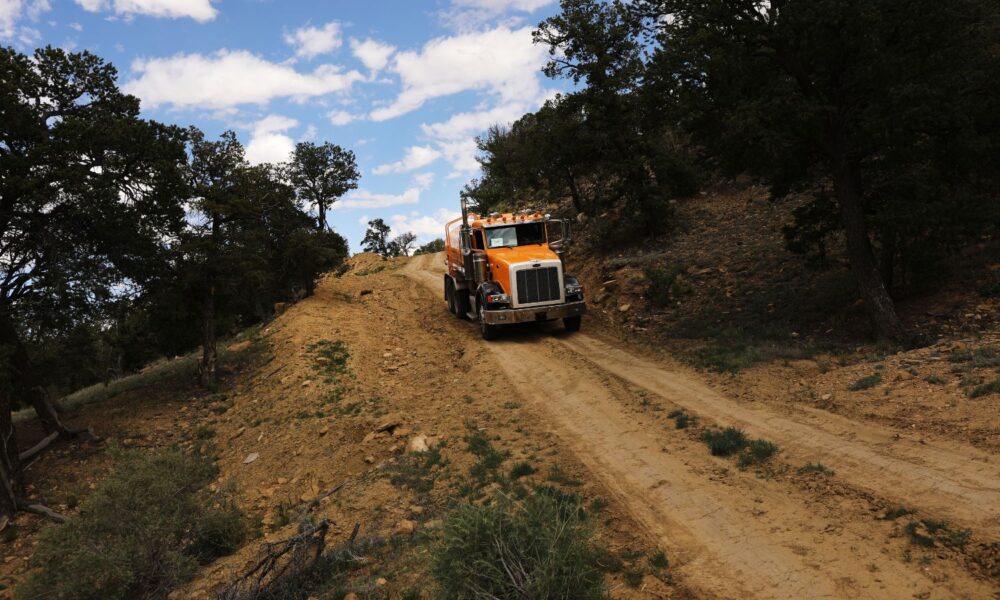Urban and regional planning is the public policy of the built environment—how communities decide what to say ‘yes,’ ‘no,’ and ‘not yet’ to in how we manage growth and development. Planning is a very wide field, covering housing, land use, environment, and many other subfields, with many practitioners earning their American Institute of Certified Planner (AICP) credential to further their skills in the field. In my small area of the field, I practice, teach, and conduct research in transportation planning, especially as it relates to Tribal communities. I’ve learned that there is often great interest from my colleagues and students in understanding what, if any, differences there are between planning in Tribal communities and other contexts, and how to get more engaged in the field.
In this post, I show what I see as three of the most pressing issues in tribal transportation policy today across many of the communities I work with, from my tribal transportation colleagues, and from those I am learning from. These include:
- Data collection and data deserts
- The impact of climate change and infrastructure resilience
- Jurisdictional overlap and gaps
While these issues do not represent the entirety of the challenges and opportunities facing Indian country, I think they highlight the three most common transportation issues across Tribal governments. I close with a few resources for those seeking to learn more about transportation issues in Indian country.
A bit of context
Tribal governments across the United States manage a comprehensive network of over 157,000 miles of roadway through 574 sovereign governments. These systems connect to and overlap with the transportation networks of their local, state, and other Tribal governments to create an extensive transportation system for both Tribal and non-Tribal users. In one sense, Tribal governments operate similarly to State Departments of Transportation, receiving federal transportation funding and directly planning, developing, and maintaining their transportation infrastructure. In another sense, Tribal governments operate quite differently from their state counterparts.
Tribal governments are sovereign nations whose lands are held in trust by the U.S. government as part of their nation-to-nation, treaty-based relationship with the federal government. The result is a dual relationship for Tribes and their neighboring local and state governments: sovereign nations navigating a wider transportation network. Figures 1 and 2 below show the approximate locations and number of Tribal governments in each Bureau of Indian Affairs region nationally.



Data: ‘deserts’ and equity
In a recent report I led through the Federal Highway Administration (FHWA), where we interviewed multiple Tribal planning practitioners nationally, we found that many Tribes face significant challenges obtaining necessary data and information for their planning processes, which sometimes limits the Tribe’s ability to conduct effective transportation planning or apply for funding opportunities. Researchers call these situations “data deserts,” or “the places where government data-gathering fails to quench the public’s thirst for civically essential information.”
Data gathering is important for many reasons, including keeping roads safe for drivers, bikers, and pedestrians. As one researcher notes, transportation crash and safety data often are underreported in Tribal communities due to inconsistencies between Tribal and state reporting practices, inconsistent data collection methods, and sharing of data. Tribal transportation practitioners I’ve spoken with in my work specifically note that many transportation crashes go unreported in Tribal communities, as Tribal members look to their neighbors and family for assistance rather than contacting the police. I have no evidence of how true or widespread that practice may be, but I have heard it in several communities in my work as a transportation planner and researcher.
What does it matter, though, if transportation data go unreported? The issue is mostly about equitable distribution of transportation funding. The Tribal Transportation Safety Management System Steering Committee writes in their report that “…for infrastructure-oriented safety decisions, roadway and traffic data are helpful to interpret crash data and identify opportunities for infrastructure-oriented safety treatments…,” which are then used as the basis “for acquiring funding from state and federal grants.” In other words, transportation data form the evidence-based justification for competitive state and federal grants to treat systemic and hot-spot safety issues. If transportation data are missing or underreported, Tribal communities are at a systemic disadvantage at competing with their local and state counterparts for transportation funding. The implications are easy to imagine; if Tribes are less and less competitive for federal funding, the maintenance, rehabilitation, and development of Tribal transportation infrastructure falls further behind that of their local and state partners. Indeed, this is where the 2021 Bipartisan Infrastructure Law (BIL) sought to correct systemic funding imbalances by providing $13 billion in focused infrastructure funding to Tribal communities nationally.
Climate change: resilience and adaptation

The second policy issue I see is that of resiliency and adaptation of Tribal infrastructure. Issues such as subsistence gathering, access to waterways, and the connection between treaty rights and specific reserved lands put Tribes in the path of climate change’s most destabilizing effects. For transportation, this looks like roadways that are vulnerable to flooding and landslides, ice roads in Alaska that are not as stable as they once were, and damage to infrastructure from increased wildfires. How can Tribes respond to these challenges?
Response may look like resilience and adaptation. By resilience, I mean strengthening existing infrastructure to withstand more extreme weather events, while adaptation refers to changing existing practices to align with changing climate contexts. Looking at the aftermath of the 2022 typhoon Merbok, for example. Alaska transportation practitioners recognized that well-built runways that were adapted to the extreme weather were some of the least impacted infrastructure systems, and first to recover from the weather event. Similarly, Tribes across the country are employing a mixture of traditional Indigenous and contemporary practices to restore their environments and respond to challenges, such as prescribed burns, creative management of aquaculture resources, and other opportunities.
Resilience and adaptation is sometimes more than improving our circumstances in place. An increasing response to climate change is to adapt by moving altogether. A few tribes have already begun the process of moving their communities, but more communities may explore this option as new funding opportunities from the federal government make this option more achievable.
Who’s in charge of the roads?
The third policy issue I see is that of jurisdictional overlap. Jurisdictional overlap means that more than one government entity has authority over a given space. In Tribal communities, this manifests in many forms, from judicial authority to environmental regulation. Ron Hall writes on the topic that, “jurisdictional authority derives from sovereign powers established by nationhood…” and that “within tribal lands, decisions regarding jurisdiction can have life-or-death consequences, as they affect who will have the authority to maintain a road, replace a stop sign, or arrest a suspected criminal.” For transportation, however, this can look like more than one entity managing the transportation system and, by extension, more than one authority policing the roads. In my home state of Oregon, Warm Springs Reservation is a good example of the former, with US26 forming the transportation spine through Tribal lands (see Figure 3). This road is owned and managed by the State of Oregon, yet forms the main corridor through the reservation. The two governments have therefore formed a number of operating agreements on how to manage the corridor through Tribal lands, respecting the State’s responsibility to maintain the roadway and the Tribe’s sovereignty over what happens in their lands.

In contrast to Oregon and Warm Springs’ positive coordination, overlapping jurisdictions often create a gap in necessary police coverage, with Tribal communities disproportionately suffering the effects. Indeed, overlapping jurisdiction is a far more sinister issue than just who will replace a stop sign.
You may know that women from Tribal communities are disproportionately more likely to be killed and/or go missing than other women in the US. These crimes are often focused on transportation hubs like truck stops and bus stations on and near Tribal communities and the connecting network, such as interstate highways. Margo Hill, a professor of urban planning at Eastern Washington University, studies the relationship between transportation and Missing and Murdered Indigenous Women (MMIW), including the complex jurisdictional challenges facing Tribal communities. In a recent article, Hill writes that Indigenous women disappear three times: “first, when they go missing; second, when the media does not report it; and third, when the data are not reported.” In other words, Indigenous women disappear at far higher rates than non-Indigenous women in the US, are reported on far less extensively, and often do not appear in national crime statistics. One reason traffickers and murderers seem to target transportation hubs is the complex patchwork of local, state, federal, and Tribal police jurisdiction over these hotspots, along with the complex system of which agency has the authority to prosecute which perpetrators, and where. Fortunately, more and more researchers, practitioners, and advocates are calling attention to this disparity, including Melanie Fillmore, a Ph.D. candidate at Boise State University, whose applied research on MMIW in Idaho recommends expanding the capacity of Tribal law enforcement, increasing collaboration between Tribal and non-Tribal law enforcement, improving data collection, and improving social service to Tribal communities.
Learn more; get involved
Tribal transportation is a complex and multifaceted policy domain, reflecting the diversity and complexity of tribal communities themselves. With 574 federally-recognized tribal governments and additional state-recognized tribes, it is not possible to represent the most important policy issues impacting each. Neither is any single policy issue universal in its impact on tribes across the US.
You may be interested in learning more about tribal transportation and how to get involved (I hope so, anyway!). In addition to the sources I’ve linked throughout, I recommend starting with the following resources. For policy issues and resources, consider exploring the policies and regulations governing tribal transportation through the BIA Division of Transportation and FHWA Office of Tribal Transportation. Additionally, the National Congress of American Indians provides considerable information on national-level policy issues in Indian country, including transportation.
For researchers and practitioners, consider joining the Transportation Research Board’s Standing Committee on Native American Transportation Issues, which is a collection of researchers and practitioners most involved in tribal transportation issues. Similarly, consider how you can engage with and support your regional Tribal Technical Assistance Program (TTAP), which are regional centers dedicated to supporting tribal governments on transportation issues in their area. Lastly (although there certainly are more resources available), consider supporting the National Transportation in Indian Country Conference (NTICC), which is an annual gathering of tribal transportation practitioners to learn from and support one another.

